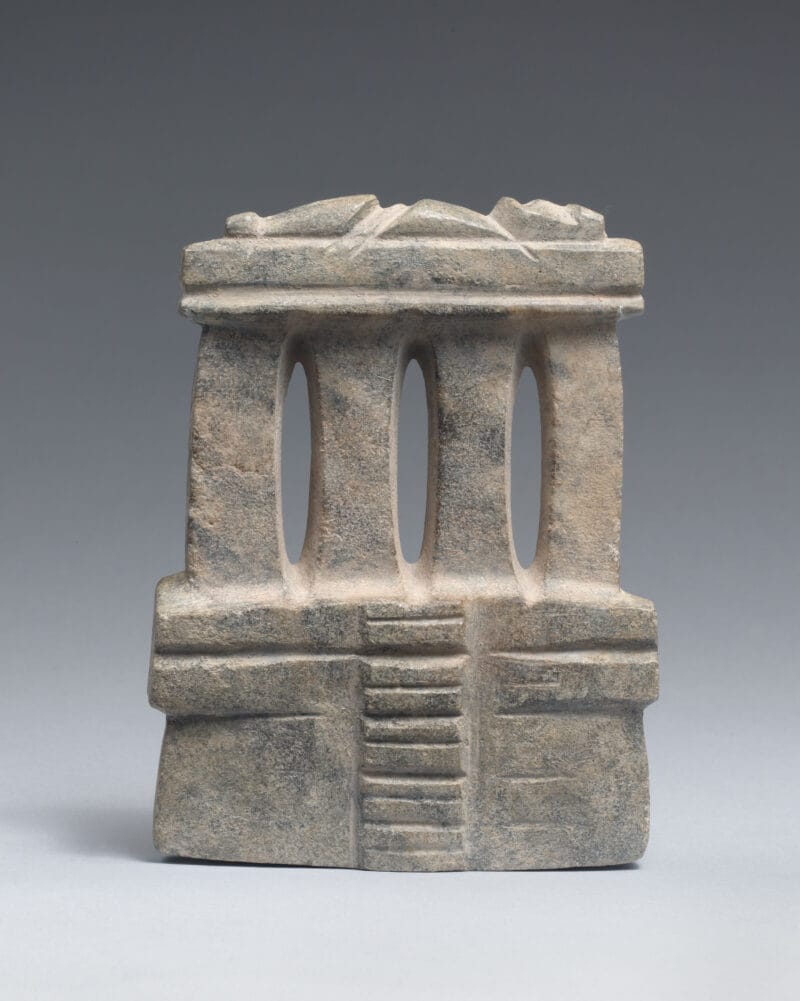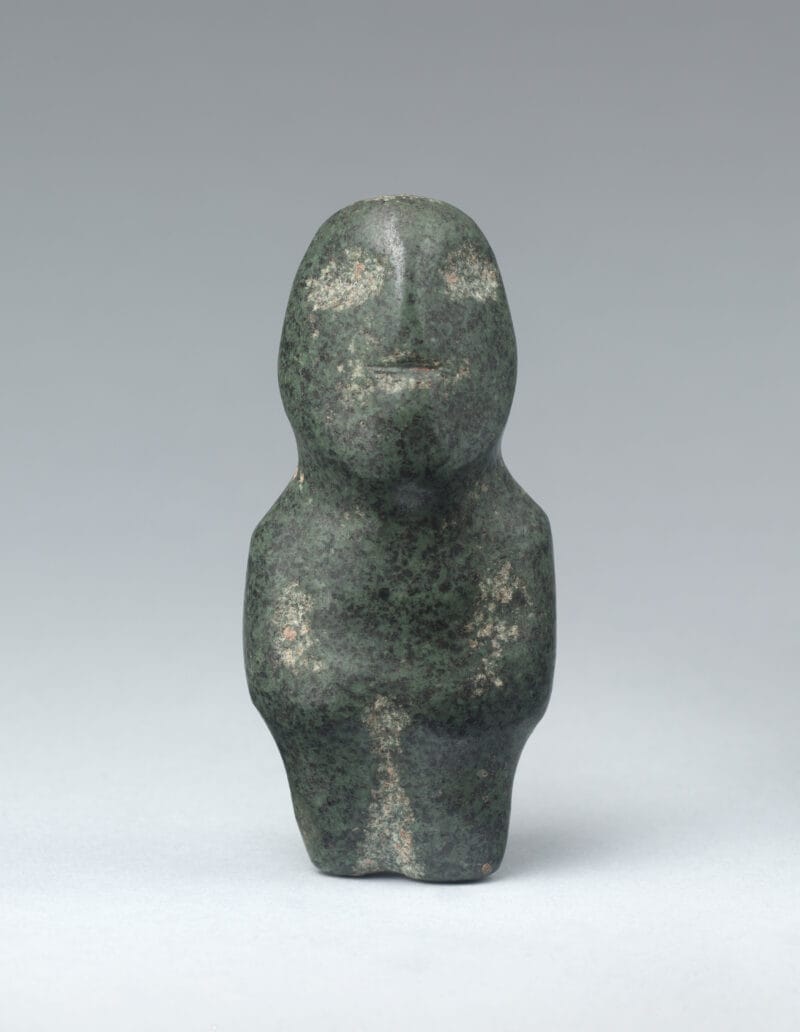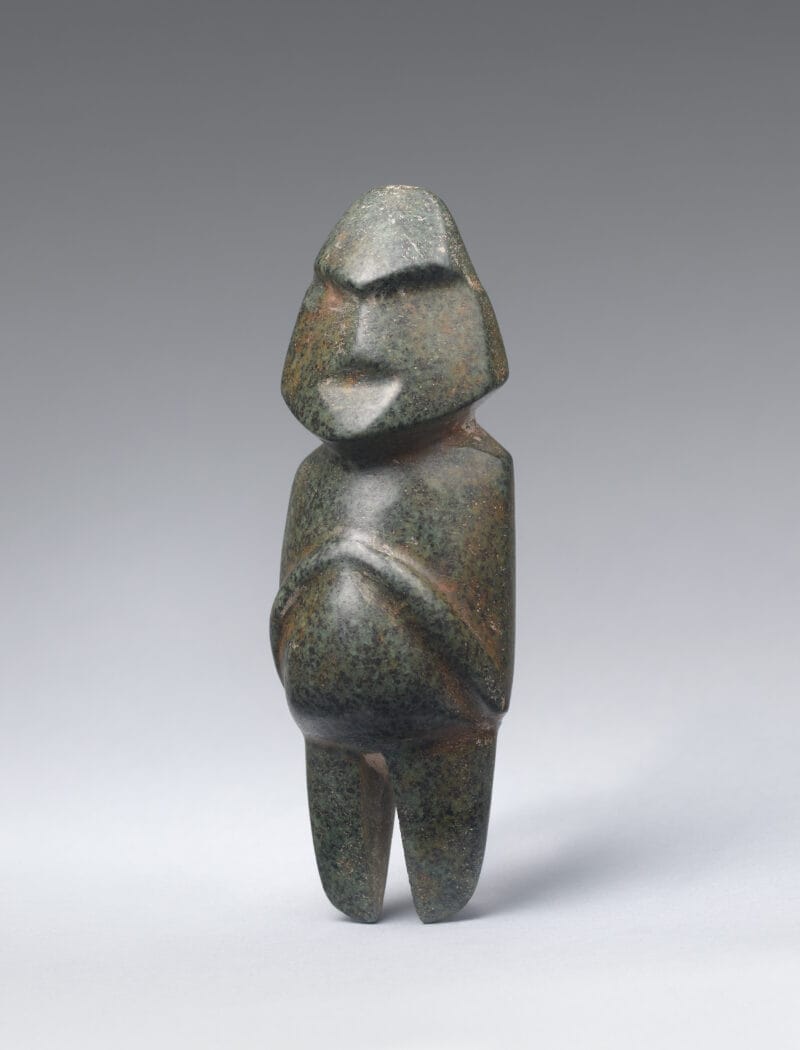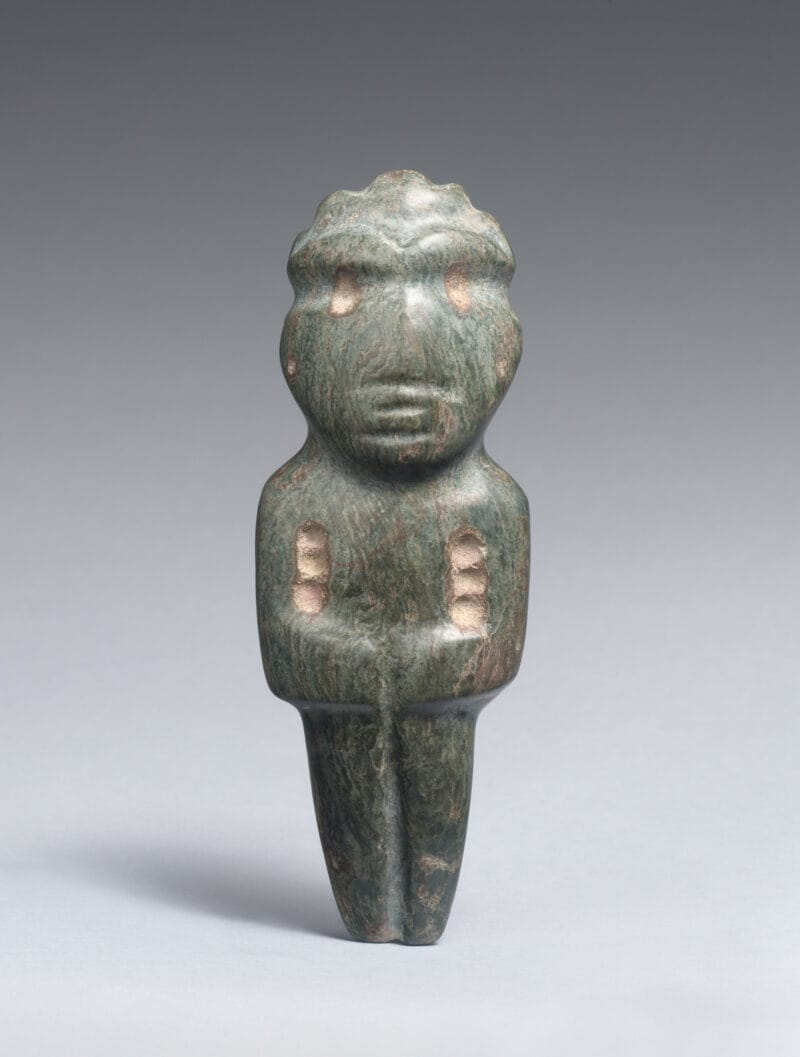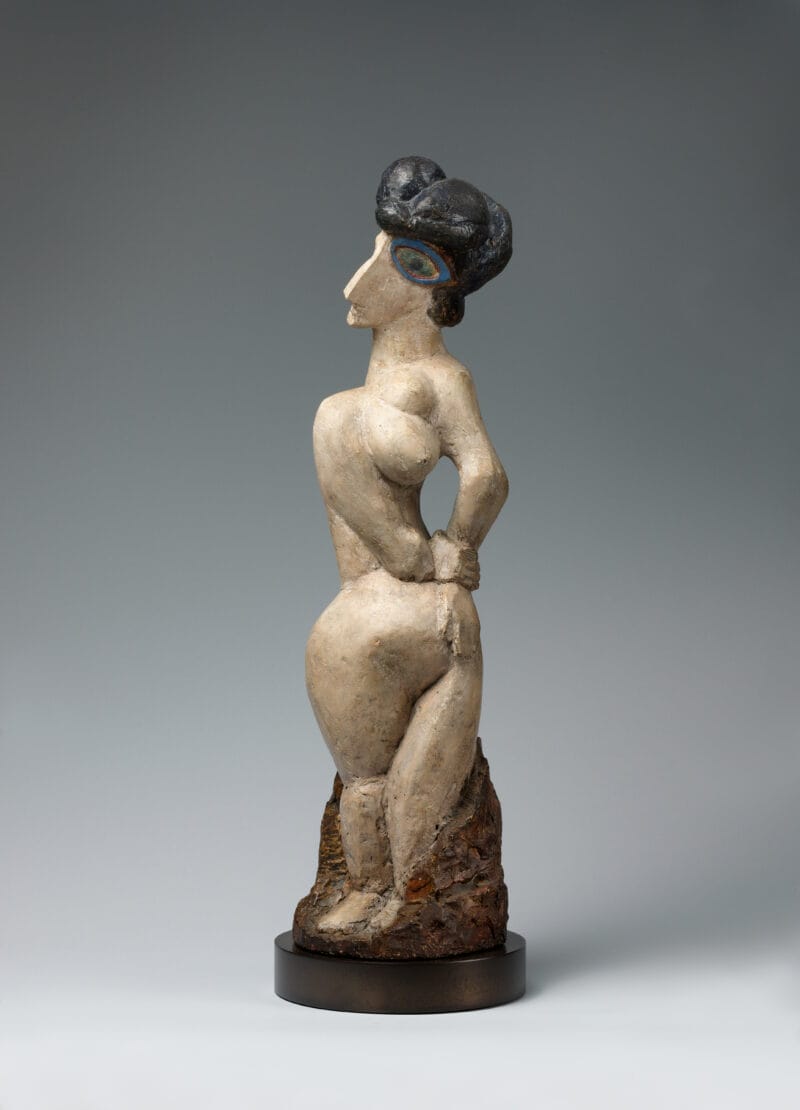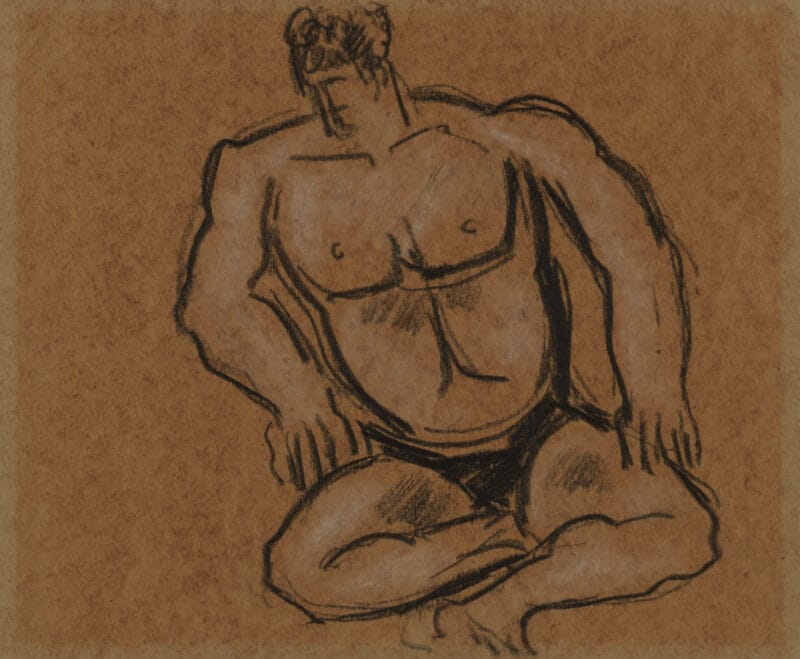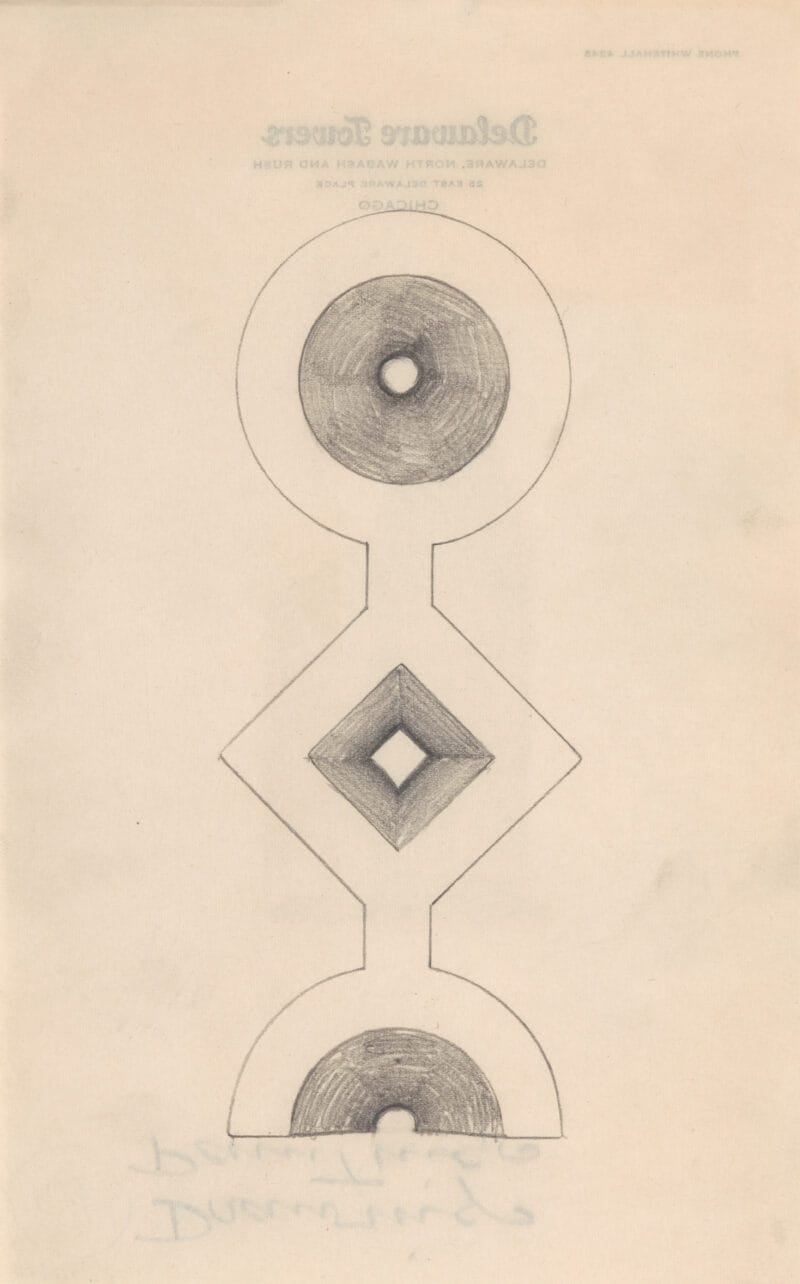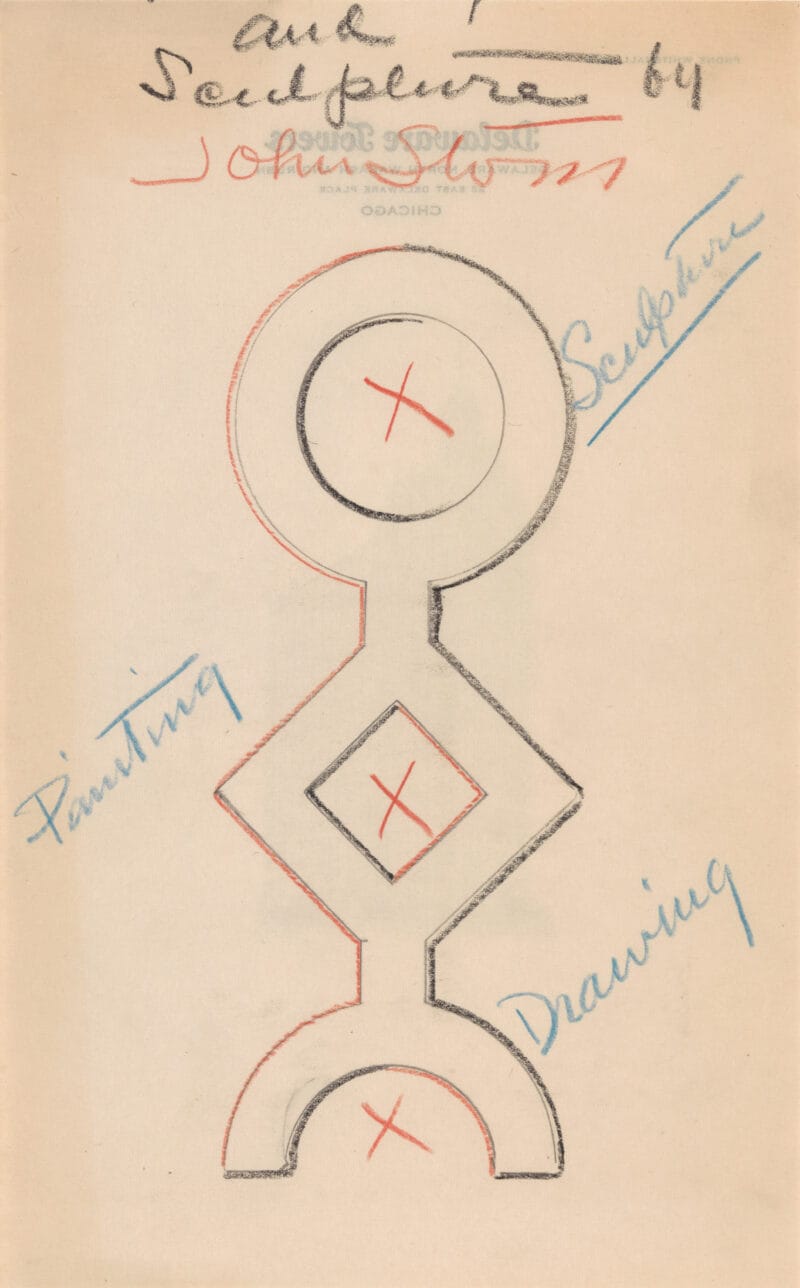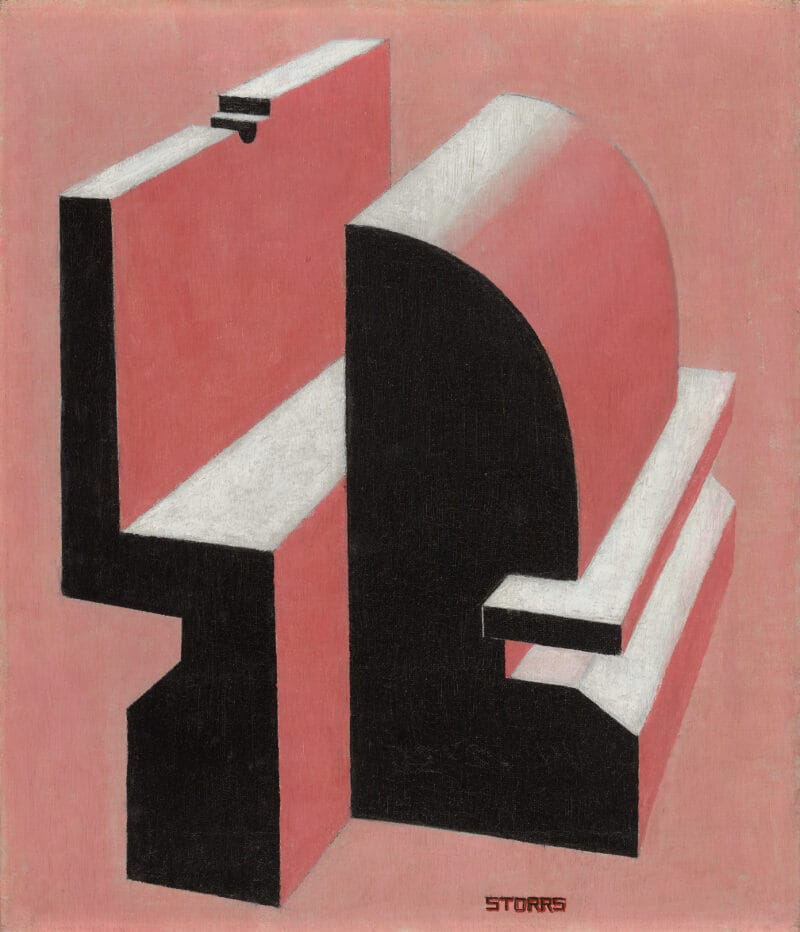
About the Object
Best known for his architectural sculptures, Storrs began painting in the 1930s, translating those forms on canvas. In this predominately pink painting the forms of man and woman have been reduced to mechanical constructions that appear to slide against one another.
Additional Information
Compare the flat treatment of forms in Man and Woman with the depth of space in Monologue, 1932 and the depth of form in Abstract in Blue and Green, 1934, both in the Whitney Museum of American Art.
The Artist;
[Downtown Gallery, New York, NY];
William C. Kennedy Associates, New York, NY, 1965;
[Washburn Gallery, New York, NY];
Harvey and Françoise Rambach, New Jersey, 1986;
Private Collection, New York, 1999;
[Gerald Peters Gallery, New York, NY];
Possibly: New York, NY. Downtown Gallery. John Storrs. March 23-April 17, 1965.
New York, NY. Whitney Museum of American Art. John Storrs. December 11, 1986-March 22, 1987, pp. 91-93, 142, ill. p. 92, no. 105.
New York, NY. Gerald Peters Gallery. American Modernism, The Françoise and Harvey Rambach Collection. September 30-November 20, 1999, p. 232-233, 305, ill. p. 233.
Sales Slip, William C. Kennedy Associates, September 22, 1965. The Downtown Gallery. Sales Records, Artwork: Sales Slips (2 of 2), 1965. Box 74, Reel 5631, Frame 665. Archives of American Art, Smithsonian Institution.
Agee, William C. and Lewis Kachur. Masterpieces of American Modernism: From the Vilcek Collection. London: Merrell, 2013, pp. 126-127, 268, ill. p. 127.
Pochoda, Elizabeth. “Freedom and the abstract truth: Jan and Marica Vilcek’s collection of American modernist art,” The Magazine Antiques (May/June 2013), ill. pp. 100, 101.
O’Hern, John. “Modern Manor,” American Fine Art Magazine, September/October 2013, ill. p. 58.
